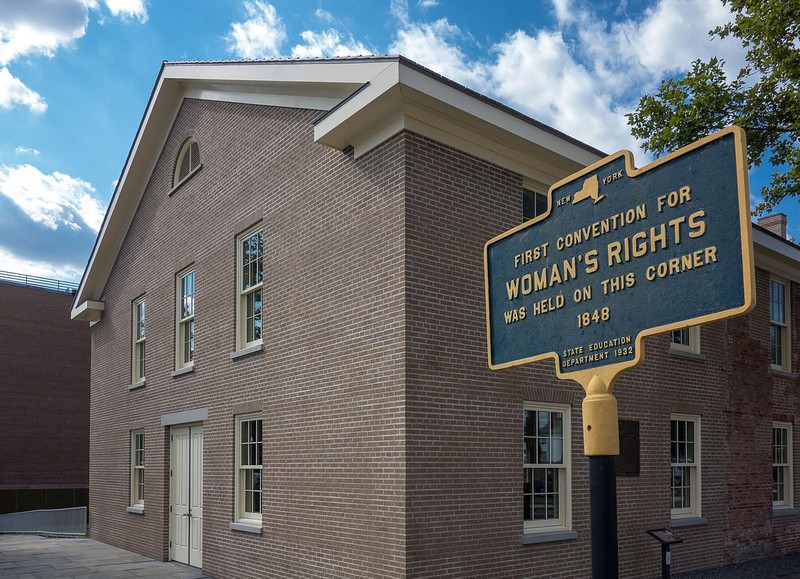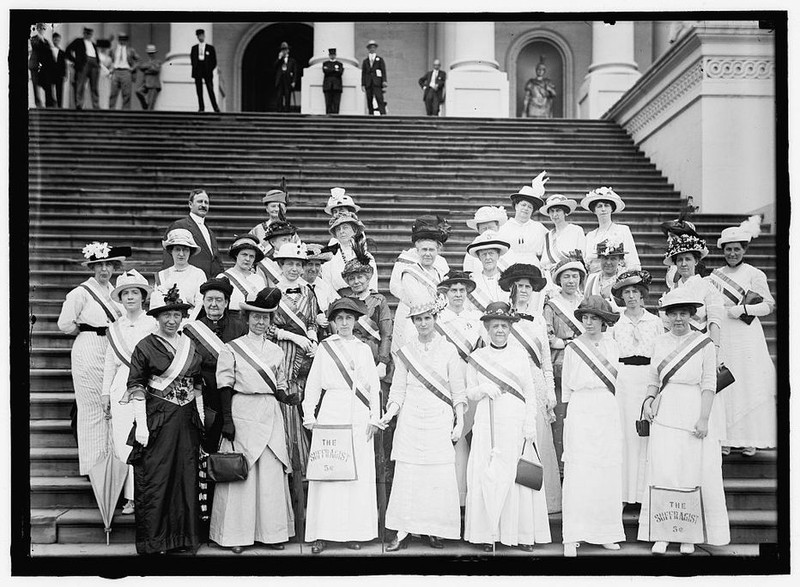Wesleyan Chapel
Introduction
Text-to-speech Audio
Images
Wesleyan Chapel where the Seneca Falls Convention was held. Photo by Syracuse.com

Women attending the Seneca Falls Convention in 1848. Photo by Votes for Women

Backstory and Context
Text-to-speech Audio
The Seneca Falls Convention was not the first idea for women’s rights. Conversations had started in the 1830s, and in 1840 at the World Anti-Slavery Convention in London, Stanton and Mott first met and began discussions about holding a convention for women’s rights. Eight years later, the women held the event in New York in the town where Stanton lived. Along with Stanton and Mott, three other women, Mary M’Clintock, Martha Coffin Wright, and Jane Hunt, joined them in organizing the convention. These women organized this event to talk about the social, civic, and religious rights of women.
Before the convention, the women drafted a Declaration of Sentiments, modeled after the Declaration of Independence, that outlined their list of 19 grievances and demands. Among those was that women were forced into submission, having to be obedient to their spouses, denied education, denied property, and given inferior roles. During the convention, there were 11 resolutions formed which demanded equality, with equal rights in church and access to jobs. All were passed unanimously except the 9th one, regarding the right to vote. Stanton and abolitionist Frederick Douglass argued in favor of it. This resolution eventually became the foundation for the women’s suffrage movement.
Those five women and other leaders continued campaigning for women’s suffrage throughout the years. It was not until 72 years later, in 1920, that women were granted the right to vote in the United States with the 19th Amendment. Elizabeth Cady Stanton also collaborated with women’s rights activist Susan B. Anthony a few years later, giving speeches and writing articles and books on women’s suffrage. It was together that they founded the National Woman Suffrage Association (NWSA) in 1869 where they discussed politics and legal issues.
The Wesleyan Chapel were the Seneca Falls Convention was held was built in 1843. The convention was not the only political movement held there. “The church was a local haven for antislavery activity, political rallies, and free speech events” (NPS). The church was sold in 1871 and altered by different owners, then bought by the National Park Service in 1985. Though little of the original building remains, the church can be found in Women’s Rights National Park and is undergoing a remodeling. The event that took place here in the summer of 1848 changed the discussion around women’s rights, set in motion the precedent for the suffrage movement, became a symbol for equality, and was the “birthplace of American feminism” (NCC Staff).
Sources
On this day, the Seneca Falls Convention begins. National Constitution Center. 19 July 2018. 07 Dec 2018. https://constitutioncenter.org/blog/on-this-day-the-seneca-falls-convention-begins.
Seneca Falls Convention. HISTORY. 10 Nov 2017. 07 Dec 2018. https://www.history.com/topics/womens-rights/seneca-falls-convention.
Wesleyan Chapel. National Park Service. 26 Feb 2015. 07 Dec 2018. https://www.nps.gov/wori/learn/historyculture/wesleyan-chapel.htm.
